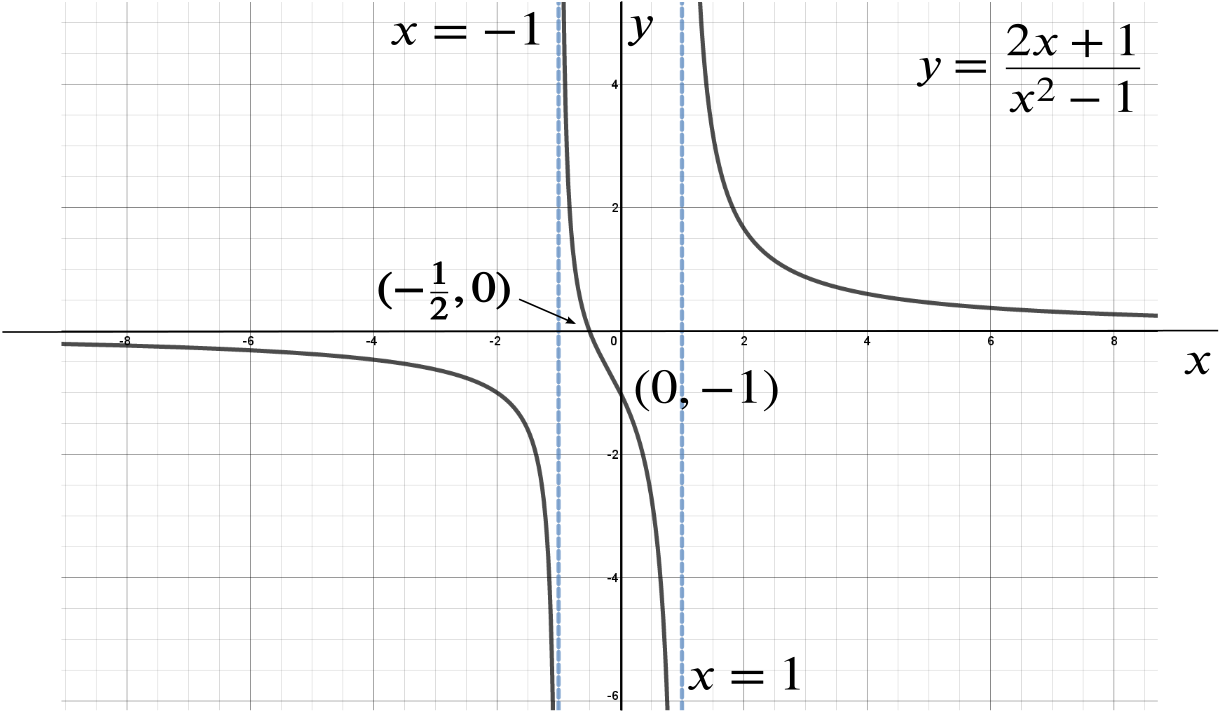Prove that, for real values of \(x\), the function \[\frac{2x+1}{x^2-1}\] can take all real values.
So for any value of \(y\neq 0\), this gives real values for \(x\), and so for these \(x\)-values, \[f(x)=\frac{2x+1}{x^2-1} = y.\]
If \(y = 0\), then \(x = -\dfrac{1}{2}\) gives \(f(x) = y\). So the function takes all real values.Sketch the graph of the function, and prove that it has a point of inflection between \(x=-1\) and \(x=+1\).
There are vertical asymptotes at \(x=\pm 1\), and the curve behaves like \(y=\dfrac{2}{x}\) for large \(x\).
Also \(f(0)=-1\) and the only root for \(f(x) = 0\) is \(-\frac{1}{2}\).
We can find the gradient of the curve by using the quotient rule (\(x \neq \pm 1\)): \[\begin{align*} f'(x) &= \frac{2(x^2-1)-(2x+1)(2x)}{(x^2-1)^2}\\ &= \frac{-2x^2-2x-2}{(x^2-1)^2}\\ &= \frac{-2(x^2+x+1)}{(x^2-1)^2}\\ &= \frac{-2\left(\left(x+\frac{1}{2}\right)^2+\frac{3}{4}\right)}{(x^2-1)^2},\\ \end{align*}\]which is always negative.
A point of inflection on a curve occurs where the gradient function has a maximum or a minimum.
Informally, our curve must change from being concave upwards to concave downwards in between the two asymptotes \(x\pm1\), and so it has a point of inflection somewhere there.
To be sure of this, we note that \(f'(-0.5) = -\dfrac{24}{9}\), \(f'(0) = -2\), \(f'(0.5) = -\dfrac{56}{9}\), and that \(-\dfrac{24}{9} < -2 > -\dfrac{56}{9}\).
This means, if we imagine the graph of \(y=f'(x)\), a continuous function between \(-1\) and \(1\), that \(f'(x)\) must have a local maximum between \(-0.5\) and \(0.5\).


